 NYC-based PIRA Energy Group reports that oil prices have continued declining under the weight of growing oversupply. In the U.S., a sharp decline in crude imports minimizes commercial stock build. In Japan, crude runs rose while imports rebounded such that stocks built. Specifically, PIRA’s analysis of the oil market fundamentals has revealed the following:
NYC-based PIRA Energy Group reports that oil prices have continued declining under the weight of growing oversupply. In the U.S., a sharp decline in crude imports minimizes commercial stock build. In Japan, crude runs rose while imports rebounded such that stocks built. Specifically, PIRA’s analysis of the oil market fundamentals has revealed the following:
Asia-Pacific Oil Market Forecast
Oil prices have continued declining under the weight of growing oversupply. In addition to the physical surplus, the macroeconomic environment has become more unsettled with increased downside risks now being factored into the pricing of "risk assets". Refining margins, which had been healthy, have now come under pressure, thus ultimately pushing back on crude demand which compounds the growing pressure to find a home for crude supply. Containing the surplus will require filling up the least economic onshore storage and using floating storage which will deepen contango structure, weighing on prompt prices.
Atlantic Coal-Gas Switching: Temporary or Structural?
Gas and power markets on both sides of the Atlantic are headed down similar paths in 2016. Storage surpluses are building, gas supply cuts are slow to emerge, and the development of greater gas use in the power sector will offer concrete stages of growth in the weeks and quarters ahead. While European spot and contract prices are still roughly twice the level of Henry Hub prices, both gas markets are competing for coal demand in a manner that suggests more than just a temporary emergence of substitution. Given the price difference, the U.S. market is much farther down the road, but a more structural change is under way within the power sectors of both North America and Europe that will be increasingly linked once LNG exports begin to add to gas demand in the U.S. and gas supply in Europe.
Load Weakness Continues, Renewable Build Grows
Eastern Interconnect weather-adjusted daily average peak loads fell by 1.3% in January. Load growth continued in ERCOT and several Southeast balancing authorities. Spot on-peak power prices increased m/m in most markets with the strongest gains in the Northeast (greater than 60%) as gas basis widened seasonally. On-peak energy prices increase year-on-year in most markets during 2H16 as gas prices move higher. Growth in wind, new TVA nuclear unit and modest forced coal burn limit gas burn gains during 1H16. Eastern coal generation falls by 1.2% in CY16 with a strong second half recovery.
Friday Rally Not Enough to Prevent Week-on-Week Slide for Coal
Despite a notable rally on Friday, coal prices again finished the week down from the end of the prior week. For most of last week, downward pressure on coal pricing came from a variety of sources, including steep declines inequity markets, weaker oil/gas pricing, and lower dry bulk freight rates. Looking forward, coal pricing generally, and FOB Newcastle (Australia) prices specifically, will heavily depend on China’s domestic consumption and import demand. This situation will be cloudy over the next 30-60 days due to the impacts of the Chinese Lunar New Year, and the corresponding lack of clarity in energy data.
Weak Asian LPG Prices Squeeze Global Export Economics
Cash propane cargoes arriving in the Far East in late March were assessed 3% lower near $320/MT. With Saudi Aramco propane CP futures currently expecting a contract price reduction of $5-$10 in March, and spot VLGC freight to Asia near $45, next month’s arbitrage economics look questionable at best. This winter’s milder conditions continue to hamper regional demand, just as the world’s LPG exporters increasingly look to the region to absorb higher flows. Cash butane prices were called 3.6% lower near $345/MT.
Global Equities Again Move Lower
Global equities again broadly fell back on the week. In the U.S., most of the tracking indices lost ground, though the defensive indicator, along with retail and consumer staples managed to post gains. The weakest performer was banking. Internationally, all the tracking indices lost ground. China was closed for their New Year, but Japan, India, and Hong Kong posted significant losses, along with Latin America.
U.S. Ethanol Assessments Strengthened to the Highest Level in about Seven Weeks
U.S. ethanol assessments strengthened to the highest level in about seven weeks. Assessments were boosted by prospects for higher exports, and prices gained despite rising stocks and lower oil and corn values. Production has dropped during the last few weeks, tightening the supply/demand balance. Manufacturing margins were sharply higher, surging as the weekend approached.
Major Contraction
Agri-giant Bunge confirmed this week what ADM said a few weeks ago; 2016 will be challenging. Other agri-related companies like The Anderson’s from Ohio, and Green Plains Energy from Nebraska had their equities decimated this week as earnings sank and major layoffs ensued. Processors of agricultural products are now starting to feel the pain that farmers are all too familiar with after 2015.
California Carbon Declines; Awaits Auction Court Decision
Going into this month’s allowance auction, benchmark contract prices declined again, reflecting oversupply and a lack of concrete long term cap and trade policy signals. Clarity on potential market drivers will begin to emerge in 2016, including the Scoping Plan Update and a verdict on the allowance auction lawsuit, expected any day. PIRA believes auctions would continue, even with an adverse decision, pending appeal to the CA Supreme Court. Otherwise, transportation sector emissions are expected to grow this year, while large declines anticipated for the power sector.
Sharp Decline in Crude Imports Minimizes U.S. Commercial Stock Build
Total commercial stocks built this week to a new record high stock level. With a larger stock build last year, the surplus narrowed to 160 million barrels. A decline in crude imports and another sharply lower domestic crude supply reading were reflected in the first crude stock draw since January 1, narrowing the crude surplus.
New Supply Regime Less Concerned with Adjusting to Weather Deviations
No reason can be seen in the fundamental outlook to expect anything but a further deterioration in spot prices for the balance of the quarter. A few colder than normal days next week and heavy snowfall across portions of the Alps are not going to be enough to turn around prices, which continue their slow deterioration in the face weaker gas demand outside the power sector. Residential/commercial use is clearly the dominant demand center for gas at this time of the year. On average, this week should be the coldest of the year, but nothing could be further from the truth at this point. Storage withdrawals remain well below normal and point toward an upcoming entrance to injection season where stocks will be above the five year average on April 1 despite showing significant deficits going into the previous winter.
No Bottom in Sight for Carbon, but Floor for German Power Approaching
EUA prices continued to fall through early February, and, in spite of Friday's rebound, they are at their lowest level since mid-2013. PIRA believes that downside risks for carbon prices remain: greater supply, a lack of policy action in 2017-2018, reduced demand from forward hedging, and lower gas prices that encourage fuel switching away from coal. There is no doubt that lower carbon compliance costs are a relief for high-emitting units, but in January and February thus far, German lignite units have been ramping down heavily in response of lower prices, suggesting some supply discipline has been emerging.
U.S. Supreme Court Stays Clean Power Plan
The Supreme Court voted 5-4 to stay implementation of the Clean Power Plan (CPP). No compliance efforts need be undertaken until legal review is completed. Efforts to develop CPP compliance approaches have now lost urgency. PIRA had not expected the CPP would survive as written and it was not in our reference case forecast. This decision is unlikely to change California's GHG approach, but it may make RGGI less ambitious in its current program review. Without a replacement for the CPP, prospects for another extension of the renewable tax credits improve.
Japanese Crude Runs Rose, Imports Rebounded Such that Stocks Built
Crude runs rose 103 MB/D on the week, while crude imports rebounded such that crude stocks built 4.4 MMBbls. Finished products drew 1.35 MMBbls, largely on a draw in kerosene stocks and supported by smaller draws for gasoline, gasoil, and fuel oil. Major product demand was higher with gains primarily in gasoil and gasoline. Refining margins continue to weaken from peak levels with gasoline and naphtha cracks falling sharply from lofty levels and fuel oil also easing. Margins, on balance, are still deemed acceptable but off significantly from earlier levels.
High Winter Stocks Warrant Low Prices — for Now
Following a price “correction” from a high north of $2.30 to a dip below $2.00, traders established a tighter range with the front-month contract retracing Monday’s rally on subsequent warmer forecast changes and an anemic inventory release.
Stay of Clean Power Plan Bearish for RGGI
With weakened prospects for carbon pricing for RGGI’s neighbors, the Supreme Court’s stay of the Clean Power Plan is bearish for RGGI pricing expectations, and RGGI allowance prices have declined in response. However, the RGGI program review, to be completed this year, will ultimately set post-2020 caps for the program, determining its stringency.
Negative Interest Rates Are Driving Market Nervousness
The Bank of Japan introduced a negative interest rate on bank reserves two weeks ago. While this move was intended as economic stimulus, it has instead turned out to be a destabilizing influence for financial markets. The prospect of competitive monetary easing by central banks has become more real, as different countries will begin to test how negative policy interest rates can feasibly go. Further, the BOJ action has highlighted the possibility that Japan is nearing the limit of quantitative easing. Key data releases for the U.S. were encouraging, but manufacturing data from Europe and India disappointed.
U.S. Ethanol Stocks Reach All-Time High
U.S. ethanol inventories spiked to a record 22.96 million barrels last week, surpassing the previous peak set in March 2012 by 243 thousand barrels. Stocks are 1.8 million barrels higher than they were at this time last year. Ethanol production increased to 969 MB/D from 959 MB/D during the preceding week, breaking a string of three consecutive weekly declines. The manufacture of ethanol-blended gasoline soared to 8,632 MB/D after having plummeted to 8,155 MB/D in the prior week because of higher overall gasoline output.
China Rally?
Global equity and commodity rallies (ex-gold) are being attributed to Chinese Central Bank currency support which continued after the conclusion of their New Year’s celebrations. A fundamental grain/oilseed problem continues to exist in China however, which could make this most recent “risk on” opinion in ags short-lived.
Financial Stress Remains Elevated
The S&P 500 fell Friday to Friday and on a weekly average basis, though Friday produced a large short covering rally ahead of the holiday weekend. All of the other indicators, such as volatility, high yield debt and emerging market debt, also worsened on the week. The U.S. dollar generally fell in value, particularly against the euro, yen, eastern European currencies and some of the Asian currencies. Commodities had a mixed week with some downward bias still remaining.
U.S. and Brazil Total Fuel Ethanol Exports Up in 2015
The U.S. shipped 799 million gallons of fuel ethanol in 2015, down 1.3% from 809 million gallons in 2014.Brazil exported 493 million gallons of ethanol in 2015, up 33.6% from 369 million in the preceding year.
Proposed Increase in Russian Taxes Would Significantly Reduce Operator’s Margins
PIRA estimates that a recent proposal to increase Mineral Extraction Tax (MET) in 2016 would cut operator’s margins by 40% and reduce drilling activity. The proposal would reduce by half the current $15/Bbl MET tax free allowance and would bring an additional $12 Billion in revenue to the government. On a yearly average, PIRA estimates Russian production to be slightly up in 2016 (140 MB/D decline January to December 2016) and decrease by 170 MB/D in 2017. Our forecast already anticipates a more burdensome tax regime in 2016 but we will continue to monitor the situation and revise our forecast as needed.
Plainly Spain: Europe's Number 1 Gets Knocked out of Position by UK
Having been nudged out of its place as the number one buyer of LNG in Europe, Spain will still play a critical role in balancing Atlantic Basin supply due to the considerable amount of contracted LNG in its portfolio (see chart below); contracted LNG that it has underlifted for many years. With limited pipeline access to the rest of Europe, Spain has quickly re-invented its role in the LNG market by re-exporting, diverting, or reselling to the wider spot market, in essence providing a key connection between the Atlantic Basin and Asian markets in a way that no pure portfolio player has been able to do thus far. It has been a lucrative business as well, but its role is fading now that both LNG producers and many buyers have taken to tendering unwanted volumes. The fact that LNG deliveries to the U.K. have surged past Spain is indicative of a supply push to Europe that is just beginning on the part of other Atlantic Basin and Mideast suppliers.
UK Gas Prices Set to be Reduced
British Gas and EDF Energy have announced they are cutting their gas prices, the last of the big six energy suppliers to do so. British Gas unveiled a 5.1% price reduction, followed swiftly by EDF's announcement of a 5% cut. British Gas's price change takes effect on 16 March, while EDF's kicks in eight days later. The moves benefit customers on a standard domestic gas tariff. Britain's big six energy suppliers have been under pressure to pass on savings to customers after a 57% drop in wholesale gas prices since this time last year. E.On was the first to announce a cut this year of 5.1%, followed by similar reductions by SSE, Scottish Power and Npower.
Euro Carbon Sensitive to Natural Gas Prices; Subject to Downward Price Triggers
EU ETS oversupply conditions have not changed: higher auction volumes, upcoming 2016 free allocations, and incentives for industrial sales. Weak structural demand is accompanied by low gas prices, reducing coal-fired generation competitiveness. EUAs are nearing parity with implied carbon values and will more closely track natural gas price movements. We do not currently expect near-term policy support for prices. A downward price trigger, like a cancelled auction, could have a sustained negative market impact.
February Weather: U.S., Europe and Japan Warm
At midmonth, February looks to be 6% warmer than the 10-year normal for the three major OECD markets with oil-heat demand weaker than normal by 279 MB/D. However, the three major regions are roughly 12% warmer on a 30-year-normal basis.
The information above is part of PIRA Energy Group's weekly Energy Market Recap - which alerts readers to PIRA’s current analysis of energy markets around the world as well as the key economic and political factors driving those markets.
Click here for additional information on PIRA’s global energy commodity market research services.


 President Obama’s fiscal year (FY) 2017 budget request for the Bureau of Safety and Environmental Enforcement (BSEE) provides critically needed resources to further strengthen BSEE’s regulatory and oversight capabilities for oil, natural gas and renewable energy development on the U.S. Outer Continental Shelf, promoting a culture of safety and environmental protection by ensuring compliance with Federal regulations.
President Obama’s fiscal year (FY) 2017 budget request for the Bureau of Safety and Environmental Enforcement (BSEE) provides critically needed resources to further strengthen BSEE’s regulatory and oversight capabilities for oil, natural gas and renewable energy development on the U.S. Outer Continental Shelf, promoting a culture of safety and environmental protection by ensuring compliance with Federal regulations.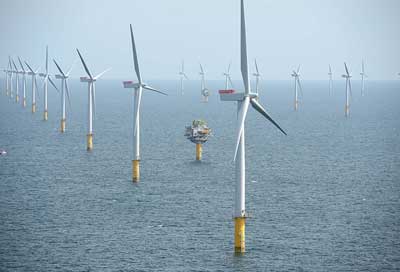 Image Courtesy: Statoil
Image Courtesy: Statoil Aker Solutions
Aker Solutions Pence will be responsible for managing and developing Seatronics’ business with a particular focus on developing long-term partnerships with the remotely operated vehicle (ROV) and survey community in the Gulf of Mexico.
Pence will be responsible for managing and developing Seatronics’ business with a particular focus on developing long-term partnerships with the remotely operated vehicle (ROV) and survey community in the Gulf of Mexico.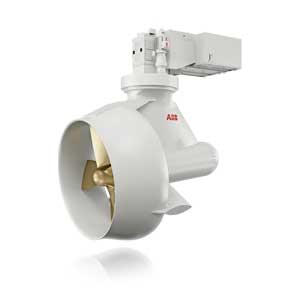 ABB
ABB Despite current low oil prices, the oil and gas industry in the Falkland Islands is continuing to go from strength to strength as its first project, Premier Oil’s Sea Lion,
Despite current low oil prices, the oil and gas industry in the Falkland Islands is continuing to go from strength to strength as its first project, Premier Oil’s Sea Lion, 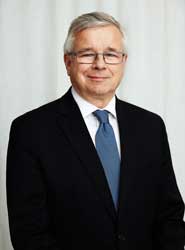 Egil Haugsdal follows Geir Håøy as President of
Egil Haugsdal follows Geir Håøy as President of 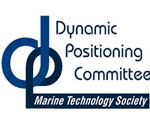 The Offshore Technology Conference (OTC) has named the Dynamic Positioning Committee of the Marine Technology Society the recipient of its prestigious 2016 Distinguished Achievement Award for Companies, Organizations and Institutions. The Dynamic Positioning Committee will be honored at the OTC Awards dinner on Tuesday May 3, 2016.
The Offshore Technology Conference (OTC) has named the Dynamic Positioning Committee of the Marine Technology Society the recipient of its prestigious 2016 Distinguished Achievement Award for Companies, Organizations and Institutions. The Dynamic Positioning Committee will be honored at the OTC Awards dinner on Tuesday May 3, 2016. Aker Solutions and Total have agreed to collaborate on research and innovation to develop new cost-effective subsea field technology.
Aker Solutions and Total have agreed to collaborate on research and innovation to develop new cost-effective subsea field technology. The initial four-year technical collaboration agreement will build on earlier cooperation and bring both companies closer in developing technologies that will reduce costs and increase value at subsea oil and gas fields. The partnership will this year explore a wide range of issues, including further evolution of subsea processing and compression systems to boost cost-efficiency of deepwater gas production, development of electric subsea controls and optimization of flow-measurement technologies. Further scope of the collaboration will be defined over the next months.
The initial four-year technical collaboration agreement will build on earlier cooperation and bring both companies closer in developing technologies that will reduce costs and increase value at subsea oil and gas fields. The partnership will this year explore a wide range of issues, including further evolution of subsea processing and compression systems to boost cost-efficiency of deepwater gas production, development of electric subsea controls and optimization of flow-measurement technologies. Further scope of the collaboration will be defined over the next months. NYC-based
NYC-based  The UK subsea sector will have the opportunity to further bolster its international profile next month at the largest oil and gas exhibition in Australasia.
The UK subsea sector will have the opportunity to further bolster its international profile next month at the largest oil and gas exhibition in Australasia.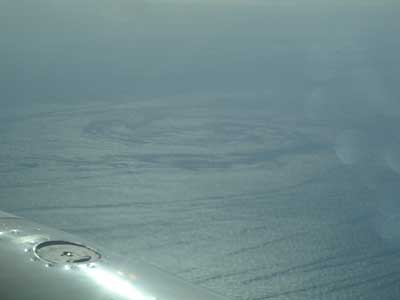 ROCIS is an airborne system for mapping surface current conditions over a wide area of ocean for current-sensitive offshore operations
ROCIS is an airborne system for mapping surface current conditions over a wide area of ocean for current-sensitive offshore operations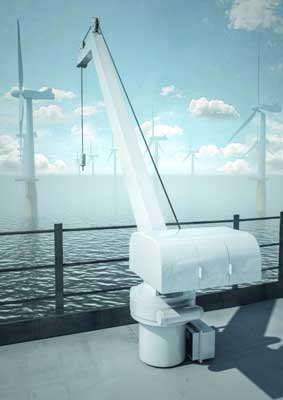 Drawing on over 30 years experience of supplying high quality cranes for offshore applications,
Drawing on over 30 years experience of supplying high quality cranes for offshore applications,  Iran’s position in the international O&G market was expectedly one of the highlight topics of IP Week. Approximately one month after the lifting of EU and US nuclear sanctions on Iran, the country’s Energy Minister has announced Tehran needs to attract a huge $200 billion in international investment to modernize its existing oil infrastructure.
Iran’s position in the international O&G market was expectedly one of the highlight topics of IP Week. Approximately one month after the lifting of EU and US nuclear sanctions on Iran, the country’s Energy Minister has announced Tehran needs to attract a huge $200 billion in international investment to modernize its existing oil infrastructure. Mr. Jardon joined Expro in 2011 as Chief Operating Officer, after holding senior roles within Schlumberger’s wireline, completions, well testing and subsea businesses, and at Vallourec & Mannesmann, where he led the organisation’s commercial activities across North America.
Mr. Jardon joined Expro in 2011 as Chief Operating Officer, after holding senior roles within Schlumberger’s wireline, completions, well testing and subsea businesses, and at Vallourec & Mannesmann, where he led the organisation’s commercial activities across North America.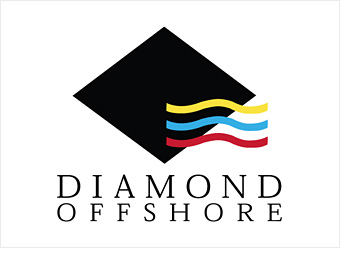 Diamond Offshore Drilling, Inc.
Diamond Offshore Drilling, Inc.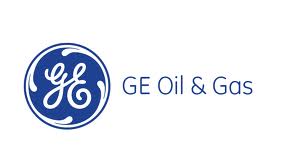 "To deliver a solution that improves drilling efficiency now and in the future, collaboration is essential," said Lorenzo Simonelli, President and CEO, GE Oil & Gas. "We are changing the game by building the new blowout preventer service model for the industry. With improved control, maintenance and servicing of our equipment, we are putting skin in the game and guaranteeing performance."
"To deliver a solution that improves drilling efficiency now and in the future, collaboration is essential," said Lorenzo Simonelli, President and CEO, GE Oil & Gas. "We are changing the game by building the new blowout preventer service model for the industry. With improved control, maintenance and servicing of our equipment, we are putting skin in the game and guaranteeing performance."